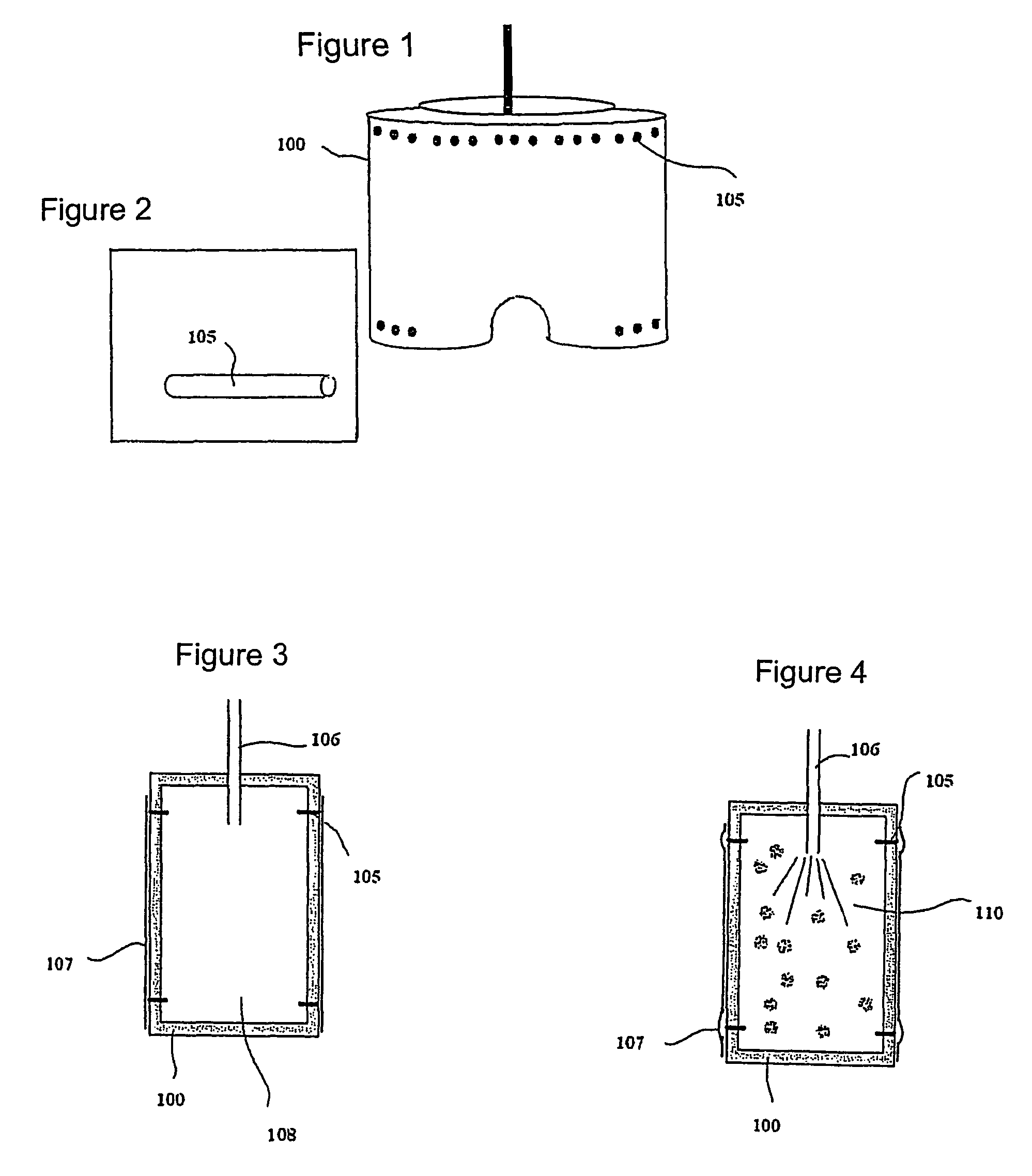Method and apparatus to produce stretchable products
a technology of products and methods, applied in the field of methods and equipment to produce products, can solve the problems of inability to easily release and strip very thin products from their moulds without damaging the products, prior techniques that are not easy to achieve, and achieve the effect of facilitating the temporary adhesion of loose fibres and facilitating easy removal of products
- Summary
- Abstract
- Description
- Claims
- Application Information
AI Technical Summary
Benefits of technology
Problems solved by technology
Method used
Image
Examples
Embodiment Construction
[0030]The present invention is generally related to methods for producing stretchable, elastic or shape-retaining products composed of principal materials comprising resilient elastomers such as natural latex rubber, polyurethane or other synthetic materials, in a spray able liquid state, using a precise controlled spraying of the liquid material onto a surface of a wall such as a workpiece former. The resulting product may have a uniform thickness or different thicknesses at different regions as desired. Different thickness in different regions of a product may be desirable in order to reinforce regions of a product such as leg or waist openings in a garment. The present invention is also directed to methods and apparatus for preparing products having a flocked single or double-sided surface, that is a surface coated with loose fibers, a method and apparatus for generating perforations in such products, and methods for removing products off a workpiece former. The present invention...
PUM
| Property | Measurement | Unit |
|---|---|---|
| thicknesses | aaaaa | aaaaa |
| pressure | aaaaa | aaaaa |
| flexible | aaaaa | aaaaa |
Abstract
Description
Claims
Application Information
 Login to View More
Login to View More - R&D
- Intellectual Property
- Life Sciences
- Materials
- Tech Scout
- Unparalleled Data Quality
- Higher Quality Content
- 60% Fewer Hallucinations
Browse by: Latest US Patents, China's latest patents, Technical Efficacy Thesaurus, Application Domain, Technology Topic, Popular Technical Reports.
© 2025 PatSnap. All rights reserved.Legal|Privacy policy|Modern Slavery Act Transparency Statement|Sitemap|About US| Contact US: help@patsnap.com



